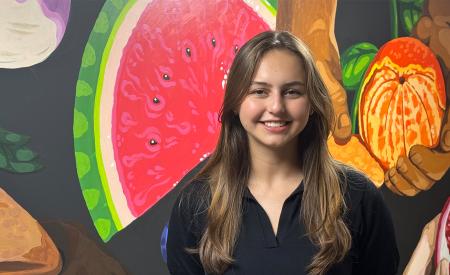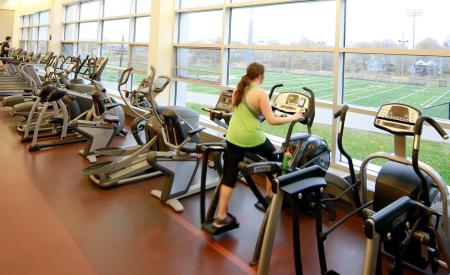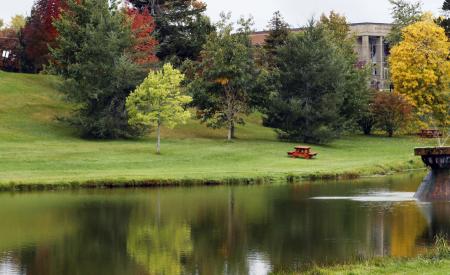Green roof project takes shape at Mount Allison
Work began earlier this academic year on a project that will blossom come spring into a little oasis on the roof of the Wallace McCain Student Centre. Mount Allison’s first green roof will feature a garden accessible off the main foyer. It is the result of the efforts of academic and administrative departments, community partners, and students.
Fiona Black, a professor of religious studies and community engaged learning, says it is both an environmental and a teaching and learning project.
“We see it as a bridge-builder, a place where we can create community programming around climate change and sustainability; a place to bring people, from kids to seniors, together to plant and learn; and a place to bring in researchers from other departments,” she says. “So, there is a pedagogical purpose, but we are also interested in it as a way of building for the future on our campus, for example, as a means to explore how our infrastructure might mitigate the effects of air pollution and help with carbon sequestration and gray water management, as well as flood mitigation and energy efficiency.”
In addition to providing a space for plants, the garden’s irrigation system has been connected to the student centre’s existing rainwater cistern, so water used in the garden will also be collected and recycled for flushing bathroom systems in the building.
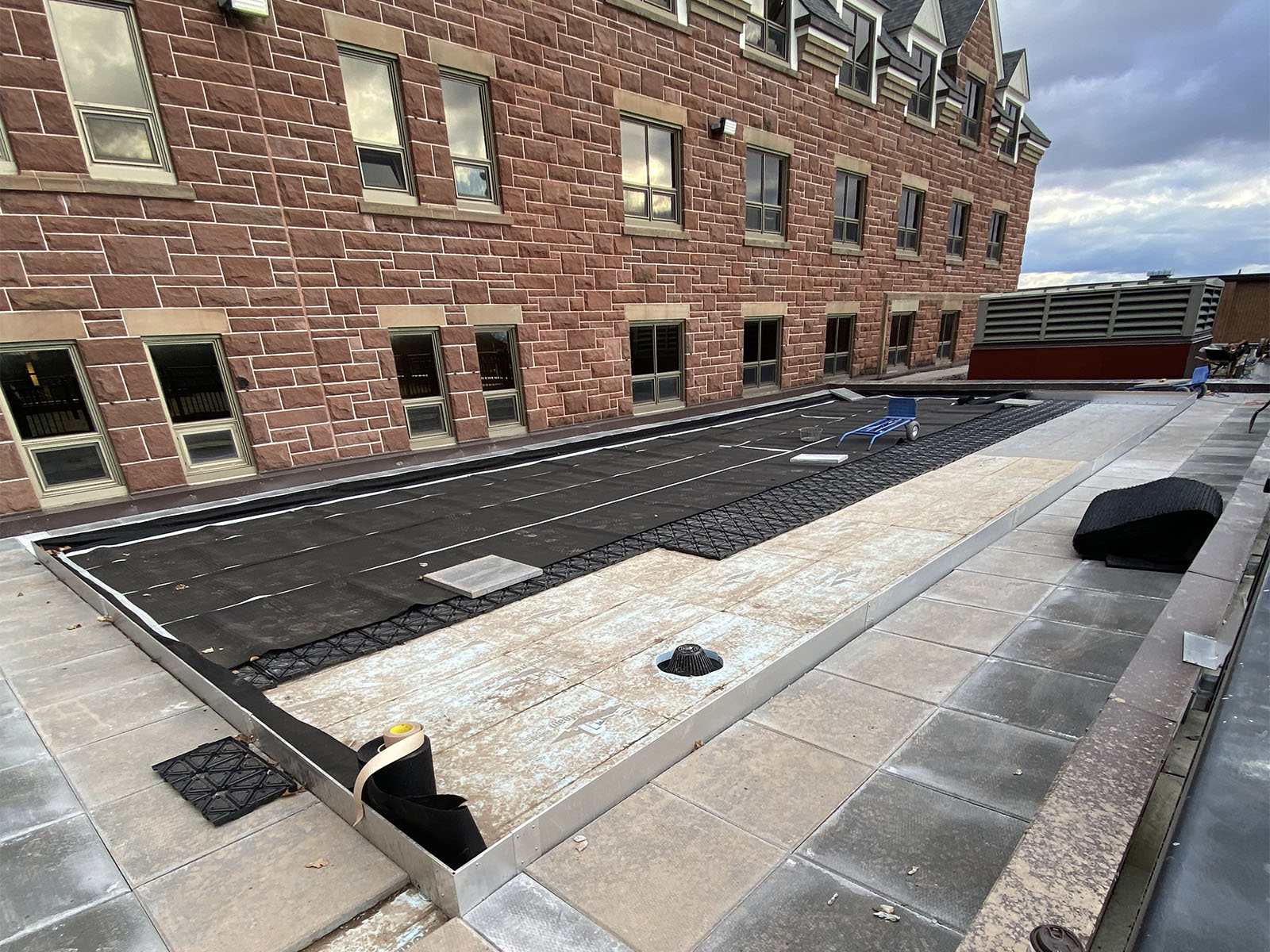
The project already served as an experiential learning opportunity for one Mount Allison class this fall. Barb Clayton, professor of religious studies, incorporated it into her third-year Religious Ethics and the Environment class.
“The idea of having a space where students could go and sit and just be near non-human natural things was very appealing to them and really caught their imagination,” she says. “Our major project for the class was to come up with a design for the green roof.”
The class read widely to see how different religions view nature and how that affects their view of the climate crisis, as well as different approaches to gardens in each religion. They also visited an existing garden at the Black Duck Café in Sackville and helped plant a green roof at Sackville Town Hall before coming up with their own vision for Mount Allison’s green roof.
“In a normal class we would have been reading and discussing all those ideas and that would have been great, but in this one we actually got to see and plant,” Clayton says. “There has been this practical element as we went along, which was much more impactful than a purely theoretical approach. Students gained a real understanding of what reconnecting to nature really means and how it can be transformative.”
Each student developed a vision for the garden and the last class of the term saw them working collaboratively to come up with a final idea of what they wanted the space to include.
“I loved this class so much. It was such a different way to learn,” says Anne Marie Gildea, a third-year religious studies major from Norwell, Massachusetts. “I never took a class that changed the way I view something so drastically.”
“We talked a lot about the climate crisis and it relieved some of that ‘eco-anxiety’ to be actually doing something instead of just talking about it,” says Brooke Mazurkewich, a third-year international relations and sociology double major from Calgary, AB. “We wanted to make sure the space was designed to be functional and wanted to create a space that people could enjoy and feel connected to nature. It’s exciting because that space isn’t really used right now.”
The project has been supported by funding from the University through the Marjorie Young Bell Endowment Fund; the Mount Allison Students’ Union’s Green Investment Fund; and Sackville-based charitable environmental organization EOS Eco-Energy.
“We are excited about it,” says Neil MacEachern, director of the University’s Facilities Management department. “It reflects what we have been trying to do here at Facilities Management and in every department with respect to finding ways to reduce our environmental impact, whether that is using smaller equipment and solar carts or new methods of snow removal and de-icing or choosing custodial products that are not harmful to the environment.”
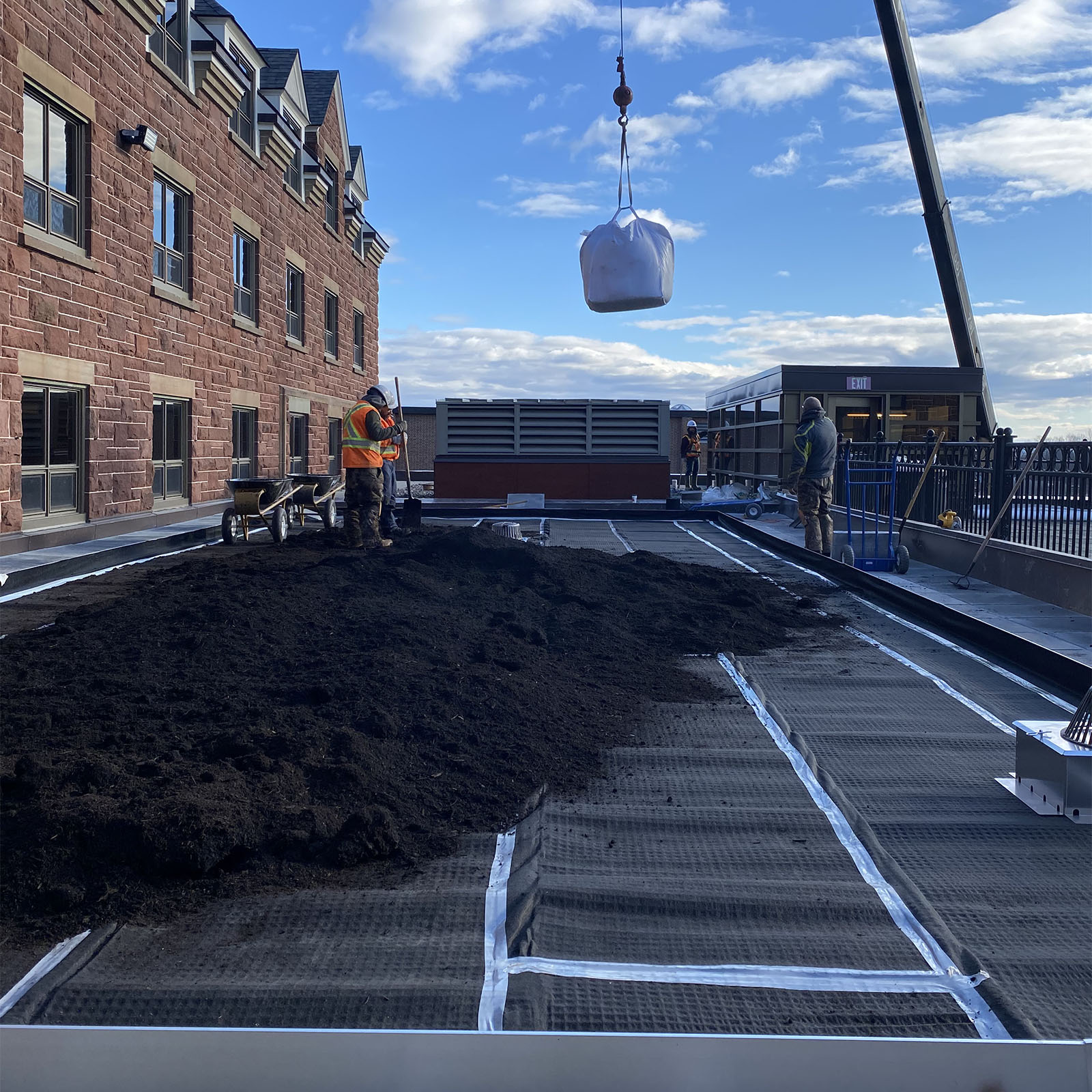
EOS provided $15,000 toward the project through an Environment and Climate Change Canada Eco Action Community Grant it was awarded last year. The grant also provided funding for the Town of Sackville’s green roof project, on which Black and Clayton partnered with EOS, providing financial support, help with planting, and the assistance of Faculty of Arts research intern Hannah Wickham, an honours religious studies student from Toronto, ON. They hope to tie the two spaces together in future work and programming.
“It’s so nice to have two green roofs in Sackville and partners who are keen to help promote the benefits of green roofs,” says Amanda Marlin (’01), EOS’s executive director. “There are not very many green roofs in New Brunswick yet and so it is my hope that these projects will help grow the green roof construction business in the province.”
Both Clayton and Black can see many different disciplines, from sciences to the humanities, taking advantage of the green roof space and look forward to seeing what creative approaches it might inspire. It also offers the potential for further community partnerships, particularly through community engaged learning classes.
“We want to set it up as a kind of sandbox for people to explore,” Black says, noting she also is thinking of possible pedagogical research uses. She sees the project as another phase in ongoing work that she has been doing with non-profit organization R-PEACE, which assisted in the creation of the Learning Lab, a flexible learning space on campus in Hart Hall.
“I would like to investigate what being outdoors does for someone when they are learning,” she says. “We know that being in a purposely-dedicated outdoor space has a profound impact on learners in other populations, so, what will be the impact here? Along with thinking about student experience, I want to understand matters such as students' intellectual flexibility, wellness, and formation of values. COVID has opened the door to learning outside of the classroom. Perhaps outdoor learning — a necessity in recent times — will become an important addition in an accessible teaching toolbox.”
The roof will be ready for planting once the frost moves out of the ground in the spring. Both Mazurkewich and Gildea are hoping to see the project through to completion. Each is looking at ways they might incorporate it into their learning in the winter term or into independent research or experiential learning projects this summer.
Editor’s Note: Have you or someone you know taken a unique course at Mount Allison? We’d love to hear your experiences. E-mail media@mta.ca with story suggestions for this series.
Photo caption (banner): Anne Marie Gildea, Brooke Mazurkewich, and Barb Clayton at the Sackville Town Hall green roof.


